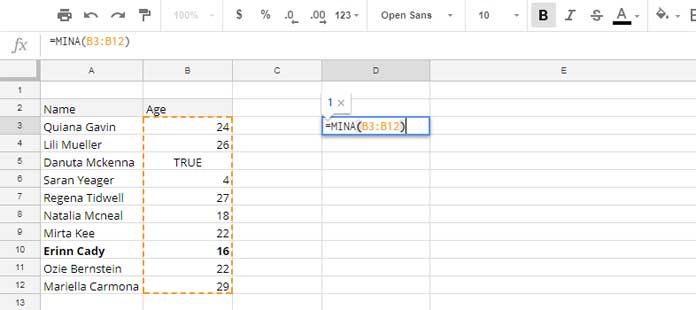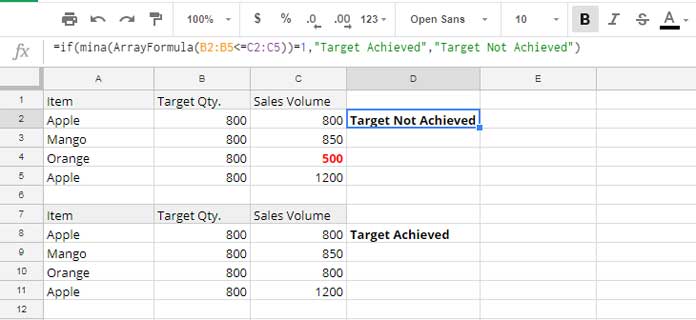MINA is a statistical function in Google Sheets to find the minimum value in a range. Don’t use this function as an alternative to MIN or SMALL. Let’s see how to use MINA function in Google Sheets. Also it’s necessary to know how MINA is different from the other two functions.
Syntax to Google Sheets MINA Function:
MINA(value1, [value2, …])
Purpose of MINA Function:
The purpose of MINA function is to find the minimum numeric value in a data set.
How to Use MINA Function in Google Sheets
We can learn the use of MINA formula below. I’ve few examples for you. I’m sure, that would be enough for you to grasp the use of this function. Honestly I didn’t use this function quite recently as I don’t find any specific use for me. But I’ve a practical example for you to try some advanced use.
In between you can also learn what is the difference between MINA and MIN. So there is no separate topic like MINA Vs MIN in this tutorial.
Example to the use of MINA in Google Sheets.

Before explaining the above formula, you should know the core difference between MIN and MINA.
While MINA returns the minimum numerical value in a dataset, MIN returns the minimum value in a numerical dataset. Here lies the key difference. I can explain it with the above same example.
The MINA formula in the above example returns 1. If you use MIN, it would return the minimum value 4. Why?
The MIN function only evaluates numeric values in a range as arguments. On the other hand, MINA evaluates numerical values, TRUE, FALSE and any text. If the range only contains numeric value, the MINA formula would return the smallest value just like MIN. But when there is text, TRUE, or FALSE in between it evaluates the values differently. MINA evaluates TRUE as 1, FALSE as 0 and any text also as 0.
Practical Example to MINA Function in Google Sheets
Here in the below example, I’m going to test whether the sales people had met the sales target. See the MINA function in action in a logical test. But please note that you can achieve the same result by using different functions.

Formula:
=if(mina(ArrayFormula(B2:B5<=C2:C5))=1,”Target Achieved”,”Target Not Achieved”)
Formula Explanation:
I’ve used IF and ArrayFormula together with MINA.
The following array formula in the above MINA logical test, returns an array result as below.
ArrayFormula(B2:B5<=C2:C5)

You can see FALSE in D4. The reason is the Sales Qty. in C4 which is less than the target qty. in B4. So all over, the sales qty. failed to meet the target. So a MINA formula can use to return 0 (zero) on this rage. Then with a logical test like if the value is zero, we can return an output similar to “Target Not Achieved” as above.
If you have any doubt in using MINA Function in Google Sheets, please drop in comments.





















